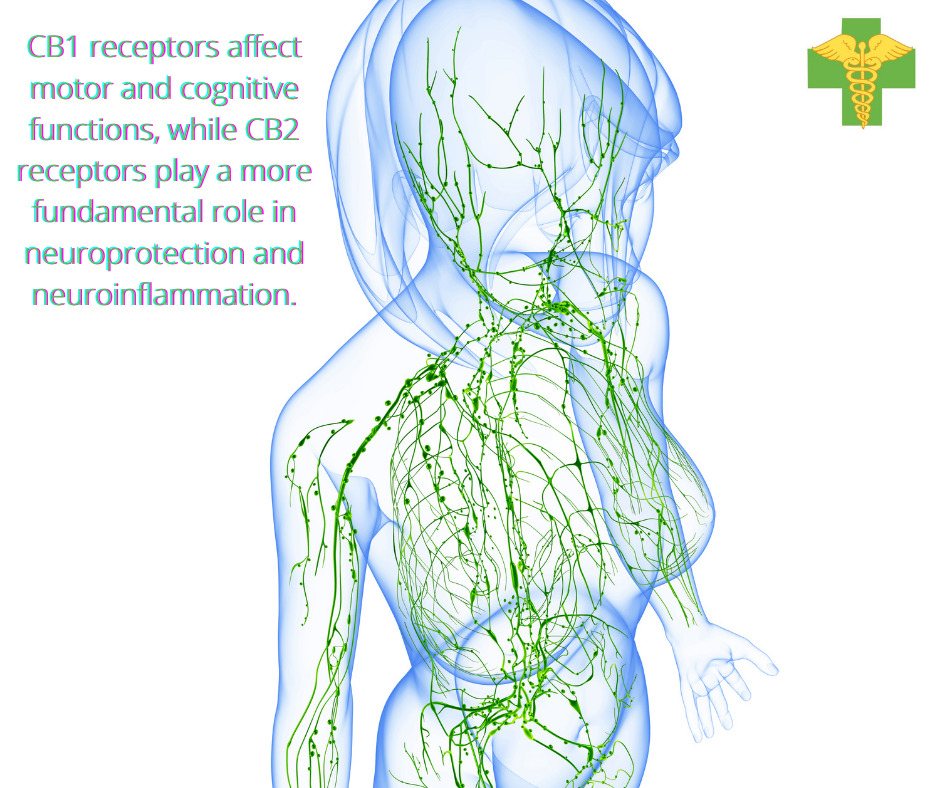An Introduction to Your Endocannabinoid System
Did you know that we all have an endocannabinoid system? Many of our most essential bodily processes are controlled by this system. It oversees a variety of functions, including our emotions, sleep patterns, memory, temperature and pain regulation, and inflammatory responses.
This article will discuss what the endocannabinoid system is and how it works.
How Your Endocannabinoid System Works
All people and animals have an endocannabinoid system (ECS). The ECS contains several cannabinoid receptors throughout our brain, organs, connective tissues, and immune cells.
The endocannabinoid system provides homeostasis within the body. Homeostasis is maintained internal stability in response to changes in the external environment. The ECS is continually working to maintain balance by regulating these various processes using cannabinoid receptors.
There are two identified types of cannabinoid receptors: CB₁ and CB₂.
CB₁ receptors are primarily in the brain and central nervous system, while CB₂ receptors are mainly in the peripheral nervous system, especially in our immune cells.
Endocannabinoids and Phytocannabinoids
Endocannabinoids are cannabinoids that our bodies produce naturally. These molecules attach to cannabinoid receptors and help to keep our internal processes in balance.
Anandamide and 2-arachidonoylglycerol (or “2-AG”) are two known endocannabinoids that bind to cannabinoid receptors and produce various effects within the body.
Phytocannabinoids are found in plants, such as cannabis. When we consume cannabis, the phytocannabinoids bind to our cannabinoid receptors. This process is like endocannabinoids do and help our bodies achieve a more balanced state.
Medical Marijuana and Your ECS
For medical marijuana patients, their endocannabinoid system is often not functioning optimally. This dysfunction can be due to many reasons, such as illness, injury, or stress.
When the endocannabinoid system is not working correctly, it can lead to Clinical Endocannabinoid Deficiency (CECD). This deficiency can disrupt homeostasis and lead to a variety of symptoms.
Medical marijuana is a potential treatment for CECD. Research has shown that cannabis can also increase the levels of endocannabinoids in the body, which helps to restore balance and possibly improve various symptoms.
How Marijuana Benefits Your ECS
Marijuana contains a variety of cannabinoids that can interact with the endocannabinoid system. The most well-known cannabinoid is THC. However, there are many other cannabinoids, such as CBD, CBG, and CBC, that also have various effects on the body.
When cannabinoids from marijuana bind to cannabinoid receptors, it can produce numerous effects. Some of the reported benefits of marijuana on the ECS include:
- Reduced pain and inflammation
- Improved sleep
- Reduced anxiety and stress
- Improved mood
- Increased appetite
So, when the ECS is not functioning properly, cannabis may help to restore balance and improve symptoms. If you think you may have CECD, talk to your doctor about whether medical marijuana could be right for you.
In Summary
The endocannabinoid system (ECS) is a network of receptors located throughout the body responsible for maintaining homeostasis. Our cannabinoid receptors, CB₁ and CB₂, are located throughout the brain, organs, connective tissues, and immune cells.
When we consume marijuana, our ECS is directly affected. This is because the cannabinoids in cannabis bind to cannabinoid receptors and produce various effects within the body.
Sources:
https://pubmed.ncbi.nlm.nih.gov/17369778/
https://www.medicalnewstoday.com/articles/endocannabinoid
https://www.sciencedirect.com/topics/chemistry/phytocannabinoid







